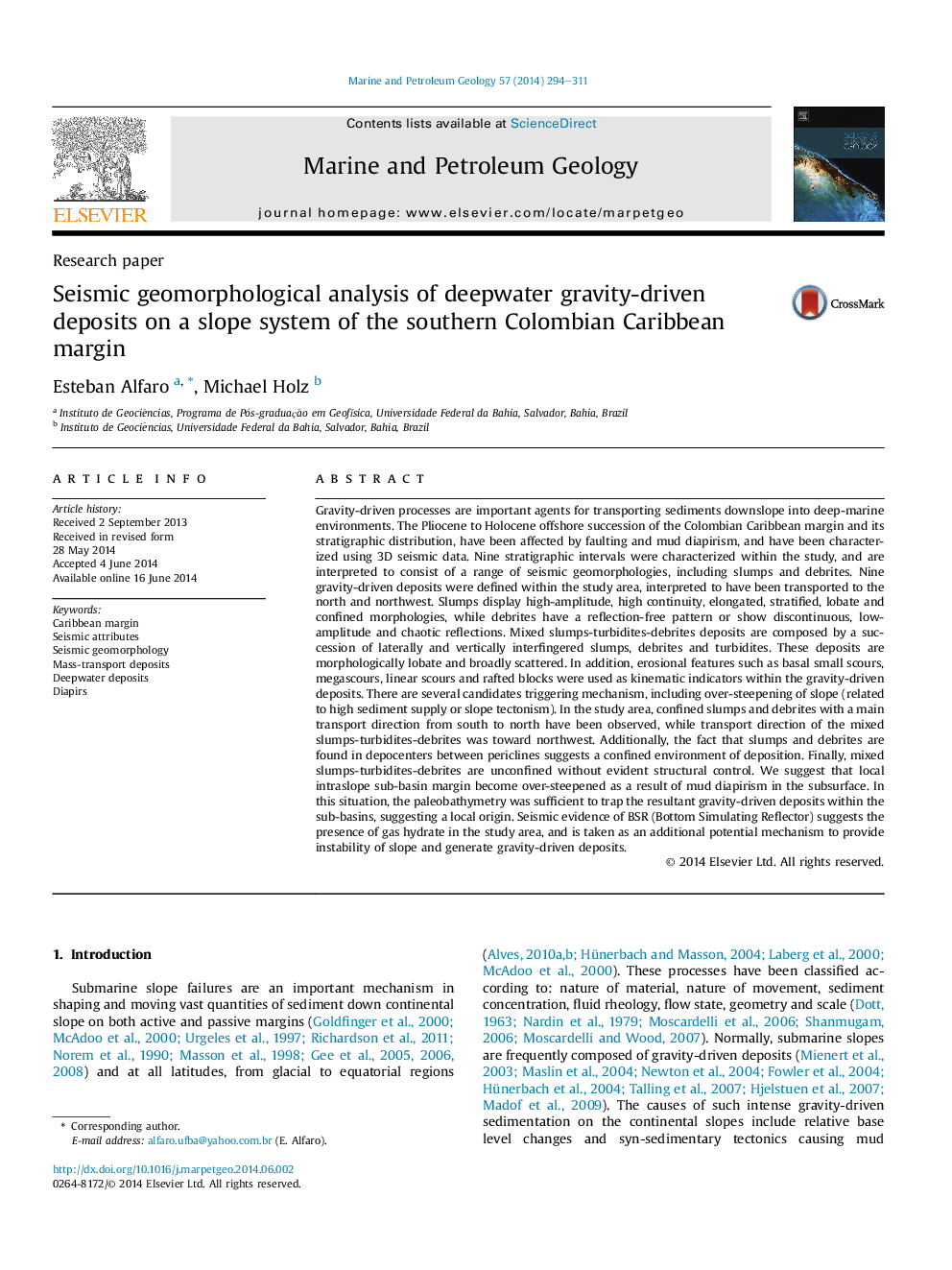| کد مقاله | کد نشریه | سال انتشار | مقاله انگلیسی | نسخه تمام متن |
|---|---|---|---|---|
| 6435355 | 1637167 | 2014 | 18 صفحه PDF | دانلود رایگان |
- Slumps display elongated, stratified, lobate and confined morphologies.
- Mixed slumps-turbidites-debrites are lobate and broadly scattered.
- Slumps and debrites showed an S-N transport direction.
- Mixed slumps-turbidites-debrites showed a transport direction to northwest.
- Folding associated to mud diapirism caused confined slumps and debris-flows.
Gravity-driven processes are important agents for transporting sediments downslope into deep-marine environments. The Pliocene to Holocene offshore succession of the Colombian Caribbean margin and its stratigraphic distribution, have been affected by faulting and mud diapirism, and have been characterized using 3D seismic data. Nine stratigraphic intervals were characterized within the study, and are interpreted to consist of a range of seismic geomorphologies, including slumps and debrites. Nine gravity-driven deposits were defined within the study area, interpreted to have been transported to the north and northwest. Slumps display high-amplitude, high continuity, elongated, stratified, lobate and confined morphologies, while debrites have a reflection-free pattern or show discontinuous, low-amplitude and chaotic reflections. Mixed slumps-turbidites-debrites deposits are composed by a succession of laterally and vertically interfingered slumps, debrites and turbidites. These deposits are morphologically lobate and broadly scattered. In addition, erosional features such as basal small scours, megascours, linear scours and rafted blocks were used as kinematic indicators within the gravity-driven deposits. There are several candidates triggering mechanism, including over-steepening of slope (related to high sediment supply or slope tectonism). In the study area, confined slumps and debrites with a main transport direction from south to north have been observed, while transport direction of the mixed slumps-turbidites-debrites was toward northwest. Additionally, the fact that slumps and debrites are found in depocenters between periclines suggests a confined environment of deposition. Finally, mixed slumps-turbidites-debrites are unconfined without evident structural control. We suggest that local intraslope sub-basin margin become over-steepened as a result of mud diapirism in the subsurface. In this situation, the paleobathymetry was sufficient to trap the resultant gravity-driven deposits within the sub-basins, suggesting a local origin. Seismic evidence of BSR (Bottom Simulating Reflector) suggests the presence of gas hydrate in the study area, and is taken as an additional potential mechanism to provide instability of slope and generate gravity-driven deposits.
Journal: Marine and Petroleum Geology - Volume 57, November 2014, Pages 294-311
